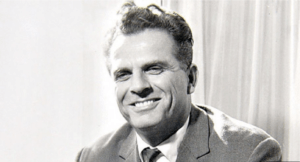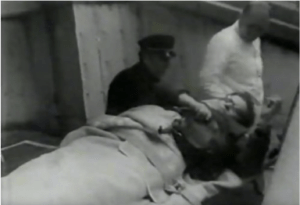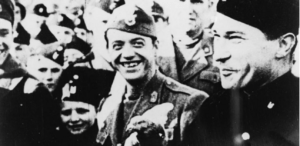
Cut Him Into Pieces
They entered the Embassy of Yugoslavia in Stockholm at 09:45 on 7 April 1971. By 10:35 it was all over.
The 1971 attack on the Yugoslav Embassy was the second such incident on a foreign delegation in 1971’s Sweden. The first incident also targeted the Yugoslavs, and took place on 10 February in Gothenburg at a Yugoslav Consulate. The consular staff was tied up and detained at knife and gunpoint by two members of the HNO who demanded the release of Miljenko Hrkać from prison. If their demands weren’t met, they warned, they would kill the staff.

The threatened slaughter of diplomatic staff was averted, and the two attackers gave themselves up after one day and were arrested. The Yugoslav Ambassador to Sweden, Vladimir Rolović, was blisteringly critical of Swedish police response to the event; but even he didn’t known that the worst was yet to come.
On that April day, Miro Barešić and Anđeliko Brajković used visas as an excuse for their entry into the Stockholm embassy building. As soon as they set eyes on Rolović they beat him with a gun and dragged him into a separate room.
This time the Swedish police acted nearly immediately.
Their quick action caused a change in plans; Barešić and Brajković later claimed they initially planned to kidnap the ambassador and hold him as a hostage to force the release of Croatian political prisoners in Yugoslavia. The quick arrival of police and their immediate storming of the embassy building made that plan, if it had been the plan, impossible.

Rolović was sat in a chair, a belt was tied around his neck, and he was shot in the head and in the stomach. Other shots rang out, one of which punched through the closed door and wounded an embassy secretary.
Barešić and Brajković then switched their attention to other quick activities: one of them urinated on his hands to cleanse them of blood, while the other threw a portrait of Tito out of the window.
When the Swedish police smashed into the office, the two men were in a corner, their hands in the air, while Ambassador Rolović lay on the floor in a pool of blood. Barešić and Brajković were arrested and taken from the building, where they shouted, “Long live the Independent State of Croatia! Long live Ante Pavelić!” They immediately admitted to being Ustaša and initially claimed that the attack was due to a previous visit Rolović made to Australia, where he took evidence and names of Ustaša who were responsible for planning attacks in Yugoslavia while living in Australia.
But this explanation didn’t last long. Later the two claimed it was an interrupted kidnapping plot, like the February attempt, to gain the release of prisoners in Yugoslavia. Nearly forty years later a new theory emerged; that the killing had been in revenge for the UDBA (Yugoslav state security) sponsored killing of the former Jasenovac commandant and Ustaša leader Vjekoslav Luburić. Luburić had been killed in 1969 in Spain by an UDBA agent named Iljas Stanić. Close examination of crime scene photos showed a photo of Stanić left on the ambassador’s desk.

Rolović was no bureaucratic rung-climber. He was an early member of the Communist Party in the Kingdom of Yugoslavia, and had been arrested twice for that affiliation. During World War II he had participated in the December 1941 Battle of Plijevlja. He was also he former head of UDBA and the former commandant of Yugoslavia’s political prison, Goli Otok.
Yugoslav reaction was immediate and demanding. The Deputy Foreign Minister, Milorad Pešić, flew into Stockholm and met with the Swedish government. He demanded that the perpetrators, including the mastermind Ante Stojanov, be sentenced to death in Sweden or sent to Yugoslavia for execution. He wanted them cut into pieces, and he shouted those demands multiple times.
A year later, Pešić’s demands seemed nearly prophetic. On 15 September 1972, Croatian nationalists hijacked Scandinavian Airlines flight 130 and demanded the release of the consulate and embassy attackers being held in Swedish prisons. Six, including Miro Barešić and Anđeliko Brajković, were exchanged for hostages and taken to Spain.
Rolović’s family has been in the news in the Balkans lately, as there are claims that yet another reason for his assassination may have surfaced: a memo, called Dispatch 154, that he sent back to Yugoslavia outlining the growing threat of Croatian extremism in Sweden and its connection to members of the Yugoslav government during the 1970s. The memo has been lost and cannot be located in the Ministry of Foreign Affairs.
For more information about the history of Yugoslavia, please click here.
- May 28, 2021
- History
